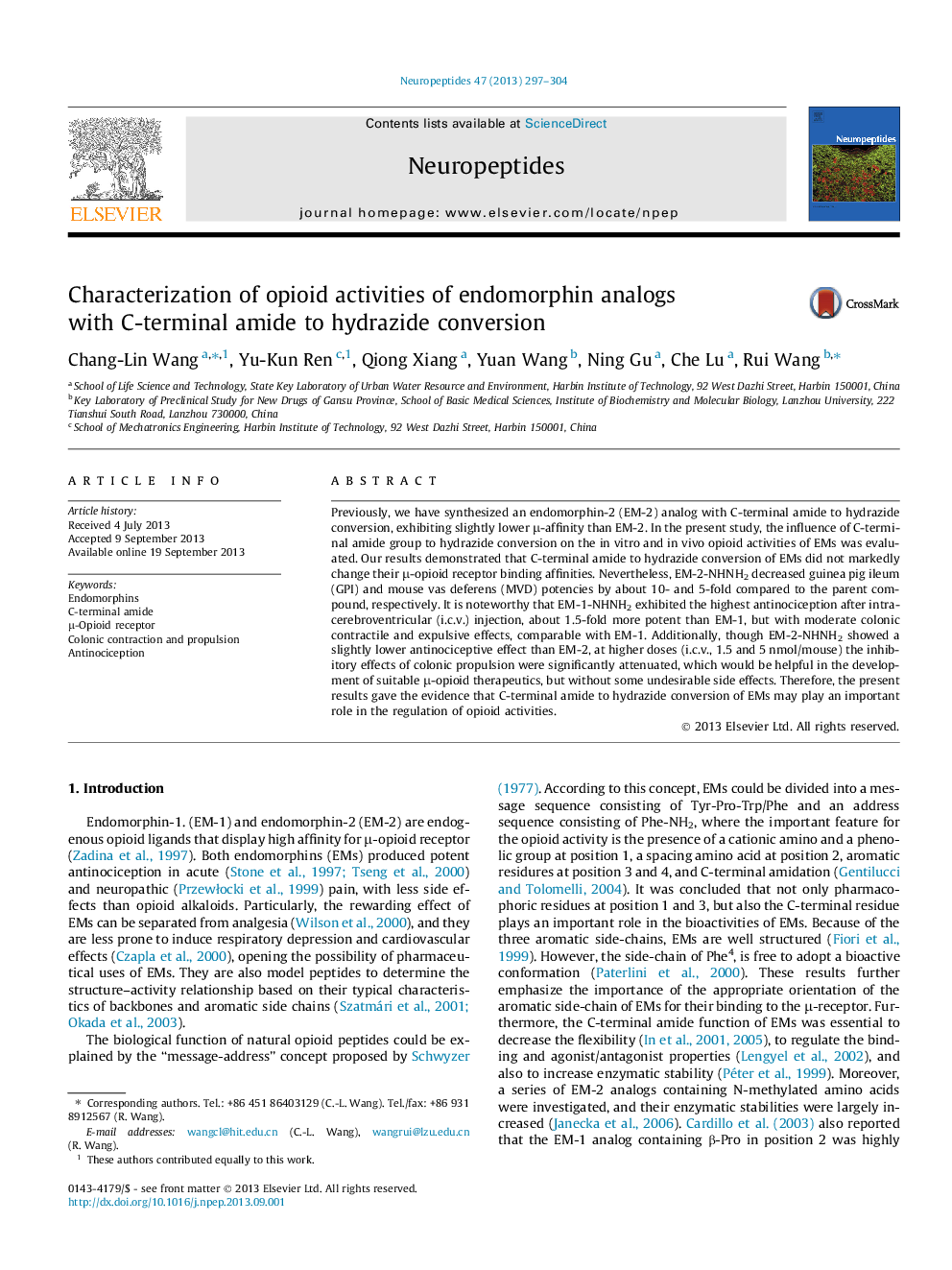| Article ID | Journal | Published Year | Pages | File Type |
|---|---|---|---|---|
| 2808088 | Neuropeptides | 2013 | 8 Pages |
Previously, we have synthesized an endomorphin-2 (EM-2) analog with C-terminal amide to hydrazide conversion, exhibiting slightly lower μ-affinity than EM-2. In the present study, the influence of C-terminal amide group to hydrazide conversion on the in vitro and in vivo opioid activities of EMs was evaluated. Our results demonstrated that C-terminal amide to hydrazide conversion of EMs did not markedly change their μ-opioid receptor binding affinities. Nevertheless, EM-2-NHNH2 decreased guinea pig ileum (GPI) and mouse vas deferens (MVD) potencies by about 10- and 5-fold compared to the parent compound, respectively. It is noteworthy that EM-1-NHNH2 exhibited the highest antinociception after intracerebroventricular (i.c.v.) injection, about 1.5-fold more potent than EM-1, but with moderate colonic contractile and expulsive effects, comparable with EM-1. Additionally, though EM-2-NHNH2 showed a slightly lower antinociceptive effect than EM-2, at higher doses (i.c.v., 1.5 and 5 nmol/mouse) the inhibitory effects of colonic propulsion were significantly attenuated, which would be helpful in the development of suitable μ-opioid therapeutics, but without some undesirable side effects. Therefore, the present results gave the evidence that C-terminal amide to hydrazide conversion of EMs may play an important role in the regulation of opioid activities.
